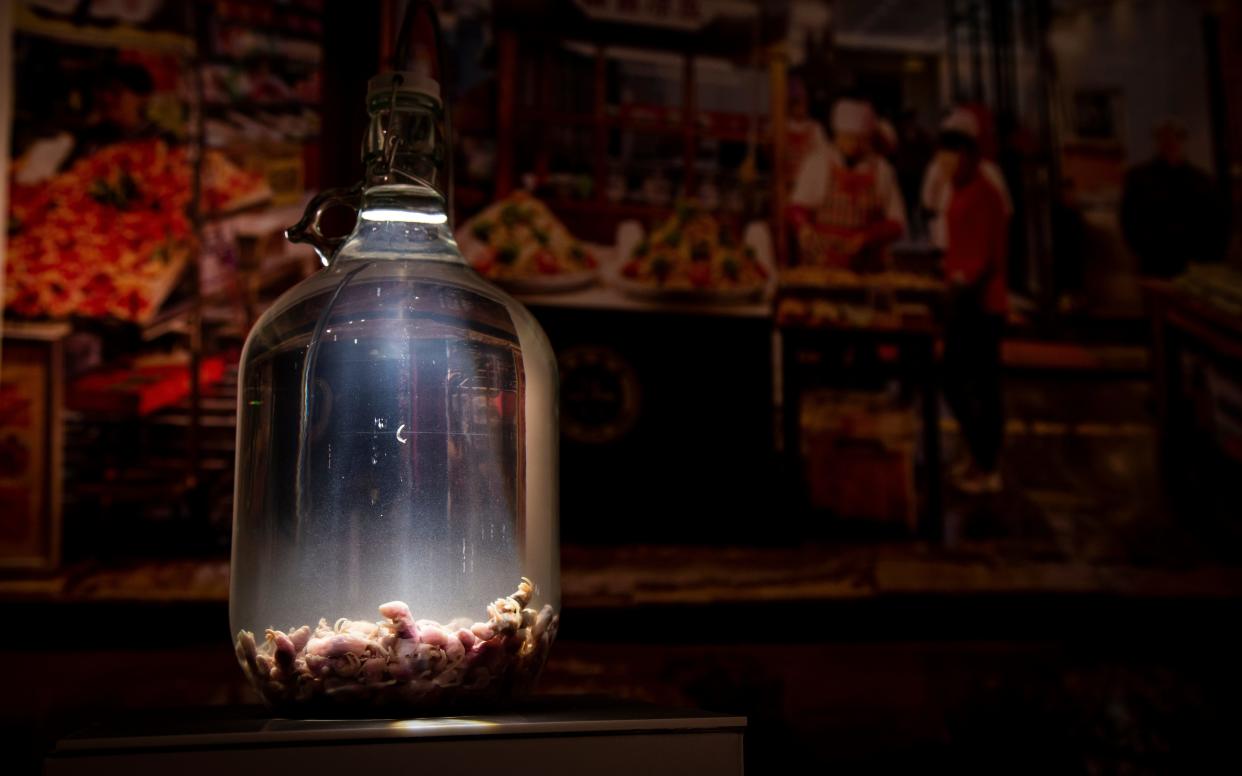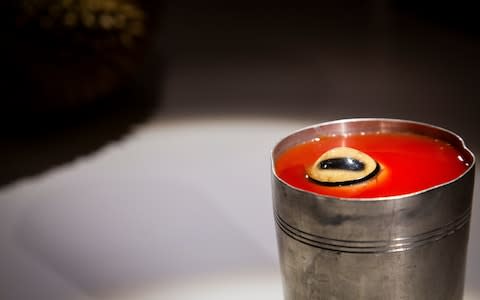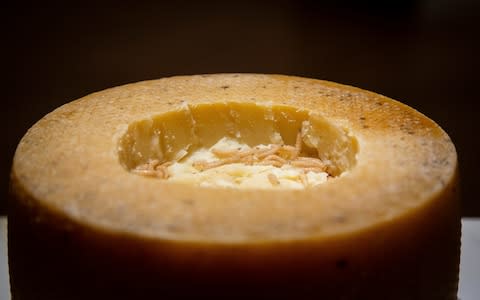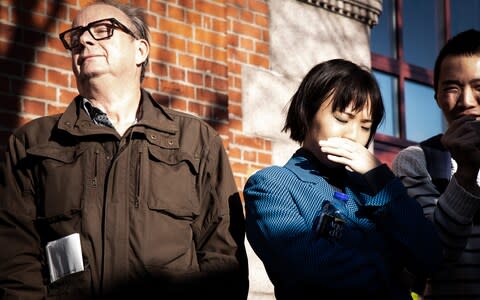Gross grub: behind the scenes at the museum devoted to the world’s most disgusting food

Does the thought of haggis make you heave? Perhaps you’re a little squeamish at the sight of a bloody steak, and the idea of eating black pudding sets your stomach churning. If this sounds like you, do steer clear of the newly opened Museum of Disgusting Food in Malmo, Sweden, where a new permanent exhibition showcases 80 of the world’s most disgusting delicacies, including bull testicles, mouse wine and Sweden’s own ‘putrid’ herring.
Brainchild of psychologist and ‘chief disgustologist’ Samuel West, and economist-turned-foodie Andreas Ahrens, the museum aims to show people that very few foods in the world are objectively disgusting, and that by opening our minds and giving them a try, we can change our perception of disgust and learn about other cultures in doing so.
"Disgust is a survival response that protects us against potentially lethal harm," explains Dr Simone Shnall, Director of the Cambridge Body, Mind and Behaviour Laboratory. Though we can change our perception of disgust over time, Shnall admits that it is difficult to override our natural reactions, so West and Ahrens may have their work cut out for them.
I ask Ahrens how the museum came to existence. “It started in 2007 when my colleague Samuel first opened The Museum of Failure,” says Ahrens. Now closed, the Museum of Failure was an intriguing showcase of failed products and services to demonstrate the important role of failure in learning and innovation.
“We started thinking about what museums we would like to visit that didn’t yet exist. Samuel had read some articles on how insects are the future of protein, a concept that isn’t exactly appetising, and it went from there.”
After researching for months and collecting 300 different ‘disgusting’ foods from around the world, Ahrens and West began whittling them down to the 80 items currently on show in the museum. “We acknowledged that disgust is very subjective, and we tried to distance ourselves from our own notions of disgust. There’s a lot of food we actually really like in the museum.” Ahrens and West created a scoring system based on taste, smell, texture and how it is made, before totting up the scores to get the top 80.
“There were a couple of foods that scored really highly in everything. One of the highest was definitely Casu Marzu, a cheese from Sardinia. You take a pecorino wheel and slice the top off, and hundreds of cheese flies will come and lay eggs on the cheese. The eggs hatch into larvae and they eat the cheese and poo it out. We then eat the larvae and the cheese that’s been through their digestive system.”

There are some obvious logistical hurdles to overcome when trying to collate the most disgusting foods in the world, as Ahrens explains. “Some things we’ve been lucky to find relatively close, but in most cases we were chasing down suppliers and shipping them from all over the world. The hardest thing to get old of was the three-penis wine from China. It’s made from the penises of seals, deer and dogs that have been soaked in rice wine.” It tastes like Jagermeister, according to Ahrens.
But it’s not all maggot-infested cheese and animal nether-regions; alongside them sit haggis, black pudding, American root beer and lobster. “Disgust is one of the six universal emotions,” explains Ahrens. “It’s our evolutionary failsafe from poisonous or dangerous food, and we develop it through seeing our parents eating and enjoying certain foods.
"If I had grown up on a shepherd’s farm in Sardinia, eating Casu Marzu would be entirely normal. I’m from Sweden and I love Swedish salted liquorice, but it’s one of the most spat-out things at the museum because people haven’t grown up with it like I have.”

And this brings me onto my next query; the reaction of visitors. “We’ve had 24 vomits so far”, Ahrens informs me. Visitors are handed sick bags as soon as they enter the building – Ahrens recounts two people vomiting at the mere smell of the famously foul durian fruit, from southeast Asia. Ahrens admits he quite likes the smell, but then again working in a museum filled with fermented, pickled and rotten foods is likely to desensitise you.
The museum also features a tasting bar, with 10 or so products rotating daily and even a ‘faces of disgust’ photo booth to capture the moment you wish you hadn’t put that mopane worm in your mouth. “At the weekend we open cans of surströmming (putrid herring) for people to try – of the 24 vomits, 14 have been as a result of eating that.”
But why do we put ourselves through this: what’s fun about ingesting the most disgusting edible imaginable? This is to do with a reaction at the opposite end of our emotional colour wheel; curiosity. We are hardwired to collect information that may be useful to us – it may help us to avoid poisoning, or keep us out of danger. Reading, watching videos or, indeed, visiting a museum exhibiting something disgusting, allows enough distance for our curiosity to roam free without fear of coming to actual harm.
And it’s true; there’s something grotesquely appealing about disgusting foods, as any childhood fan of Roald Dahl can testify. I remember revelling in the detailed descriptions of Grandma eating insects in George’s Marvelous Medicine, Centipede’s ode to slobbages and wampfish roes in James and the Giant Peach, and goose livers stuffed into donuts and enjoyed by Farmer Bruce in Fantastic Mr Fox (though, in retrospect, this sounds right up the street of St John’s restaurant in London). Whether I want to eat them myself, though, is a different matter.

Having said this, the museum does have the odd success. Ahrens tells me he was very pleasantly surprised by the taste of bull testicles after deep frying a few at the weekend for his visitors. “We had a girl, maybe aged seven, who ate about ten pieces as she liked them so much.”
What Ahrens loves about curating the museum, besides the reactions of visitors, is the amount he has learned about different cultures and the different circumstances in which these perceived disgusting foods came into existence. “The most frequent question we are asked it 'why did people decide to eat this?' and normally it’s a very natural process; pickling to preserve in the times before refrigerators and so on, but sometimes even we go 'actually, I have no idea how this food came into being.'"
If you yearn for sheep’s eyeball or sip of mouse wine, you may be in luck; though the exhibition will remain permanently based in Sweden, talks are underway about the possibility of popups in major cities around Europe, so London might be getting its own taste of Malmo’s Disgusting Foods.

 Yahoo News
Yahoo News 